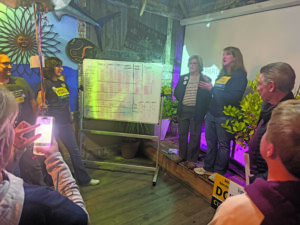A key, final component of what emerged last summer as a comprehensive legislative package aimed at severely restricting over-sized development on residential lots in the City of Falls Church went down in flames Monday night, ending what many had come to consider a crusade to “deprive of citizen property rights.”
The City Council voted 3-2 to torpedo a measure that would have further restricted the “impervious” lot coverage of residential properties from 35% to 30% of the total size of the lot. Had it passed, it would have marked the second time in two years that greater restrictions were voted into law.
The package as it came forth in the summer sought to end so-called “pipestem” developments, where properties are subdivided with driveways leading to second homes built in the rear, to make virtually impossible new residential development on the City’s many smaller, so-called substandard lots and to further restrict impervious building on residential lots.
It took awhile, including countless hours of City staff time, but eventually, as of this Monday, all that was left was a measure not to prohibit, but to limit development on sub-standard lots to a sliding-scale height restriction formula of lot “proportionality.”
City residents and the Greater Falls Church Chamber of Commerce were joined by key members of the City’s Planning Commission to push back against the measures.
The Chamber board’s Paul Barkley, a long-standing architect in the City, testified repeatedly about “unintended consequences” of the proposals, while Planning Commission chief Ruth Rodgers spearheaded opposition on her board, railing against, among other things, the “deprivation” of property rights.
Last month, the Commission voted against recommending a greater restriction on impervious cover, and that was instrumental in the Council’s vote to kill the proposal this Monday night. To override a Planning Commission recommendation, the Council had to achieve a “super-majority” vote, and with only five of seven Council members present for Monday’s meeting, it would have required a unanimous vote.
But Mayor Robin Gardner joined Council members Dan Sze and Hal Lippman to vote no, while Vice Mayor Lindy Hockenberry and Dan Maller voted yes.
The Council then voted unanimously to adopt the “height proportionality” ordinance for sub-standard lots, which would, as Lipmman pointed out, prevent development in the future of the kind of “abhorrent, terrible twin towers” that he said characterize two large side-by-side residences now under construction on E. Broad.
The Planning Commission had voted unanimously against recommending the proportionality ordinance on grounds that a more comprehensive re-write of zoning laws was preferable. Indeed, it was reported that a request for proposal for just such a comprehensive review has been prepared by City Hall and published.
But some observers saw the Council’s vote to adopt the proportionality component as at least partly a face-saving measure, given the entirety of the original package of reforms introduced last summer was turned down.












